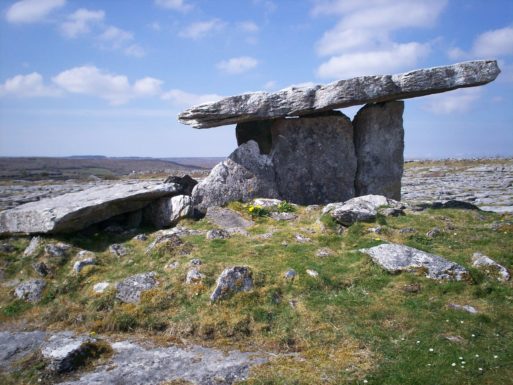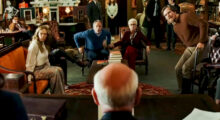In modern-day America, most of us think of Halloween as a fun holiday — a time when kids of all ages get to shed their everyday personas and dress up as anything from a witch or a monster to a character in their favorite TV show. We carve jack-o-lanterns and proudly display them on the front porch, lit up at night for the whole neighborhood to see. We visit haunted houses stocked with scary ghosts and ghouls, and some of us even build mock graveyards on our front lawns, replete with spider webs and tombstones and fake limbs reaching out from the grave. But as we carry on these traditions, few of us understand where they originated or why we celebrate a holiday that — at its core — is about fear, superstition and death.

An Ancient Tradition
The word “halloween” is actually a contraction of All Hallows Evening — the evening before Hallowmas, or All Saints Day. In Western Christian tradition, the holiday spans three days, October 31 (Halloween), November 1 (All Saints Day) and November 2 (All Souls Day), known collectively as Hallowtide. This tradition dates back to the 8th century A.D., when Pope Gregory III designated November 1 as All Saints Day.
According to most sources, however, the true origins of Halloween go much further back — to an ancient Celtic celebration called Samhain (pronounced sow-win by the Irish Celts). Sometimes referred to as a harvest festival, Samhain actually encompassed a variety of rituals meant to pay homage to the dead. The celebration was held on the day that marked the end of the season of light (summer) and the beginning of the darkness (winter). A superstitious lot, the Celts believed that on this day the separation between the earthly realm and the Otherworld was at its thinnest, allowing the spirits of the dead to pass through.
The Rituals of Samhain
Samhain was celebrated in much of Great Britain, but was of particular importance in Ireland, Wales and the Isle of Man. During the celebration, which lasted from sunset October 31 through sunset November 1, citizens of the region would don costumes, usually made from animal heads and skins, to frighten away evil spirits and protect their homes and crops. A communal feast would be prepared for both the living and the dead. In some areas, this was known as “Dumb Supper,” — a meal served in total silence during which the place at the head of the table was left empty for the spirits to occupy. When the spirits were served food and drink, the server kept their eyes averted since looking directly at them would bring bad luck. After the meal was over, the uneaten food would be taken outside and left in the woods.
 Fire was also a prominent feature at Samhain celebrations, possibly because, as days shortened and the hours of darkness increased, it was seen as essential protection against the dangers of the night. The community would build a bonfire in an open field and burn the bones of recently slaughtered animals to keep evil spirits at bay. Afterwards, the farmers would light torches from the fire and carry them around the perimeter of their properties to protect their livestock and food supply. They would then extinguish the fire in the family hearth and relight it with the same torch.
Fire was also a prominent feature at Samhain celebrations, possibly because, as days shortened and the hours of darkness increased, it was seen as essential protection against the dangers of the night. The community would build a bonfire in an open field and burn the bones of recently slaughtered animals to keep evil spirits at bay. Afterwards, the farmers would light torches from the fire and carry them around the perimeter of their properties to protect their livestock and food supply. They would then extinguish the fire in the family hearth and relight it with the same torch.
The Celts also believed that Samhain was a time when the Druids (Celtic priests) were able to more easily reach the Otherworld and predict the future. Thus, the Druids would tell fortunes during the celebration — predictions that were of tremendous importance to a people who were completely dependent on good fortune to survive the winter to come.
Samhain also coincided with the Great Sabbat for witches (Ban-Druidh, in Scottish Gaelic) — the night when all the witches of the region gathered to celebrate and cast their spells. According to legend, they could be spotted flying through the air on broomsticks, black cats, ravens or horses, terrorizing the citizens or rural Scotland and Ireland, who were afraid to step out of their homes.
Samhain and Halloween Merge
At the start of the 19th century, many Irish and Scottish immigrants came to America in search of a better life, bringing the traditions of the old country with them, including the rituals of Samhain. However, since most of the Irish and Scots who came to America settled in major cities like New York and Boston, traditions such as bonfires gradually gave way to jack-o-lanterns and other symbols now associated with Halloween. Then, around 1920, the Irish practice of “guising” — going door to door in disguise on Halloween begging for food, came to the United States, although it was not common practice for children to take part at the time. The saying, “trick or treat” is also a relatively modern term.
Interestingly, modern day pagans view Samhain as a spiritual holiday, separate from Halloween. Much like the ancient Celts, they view the day as a time to honor their ancestors and pay homage to the natural world.

 Halloween and the Celtic Festival of Samhain
Halloween and the Celtic Festival of Samhain


 “Other Side” Documentary Directed by Carter Oakley and Heather Hogan
“Other Side” Documentary Directed by Carter Oakley and Heather Hogan
 The Other Death in the Family
The Other Death in the Family















